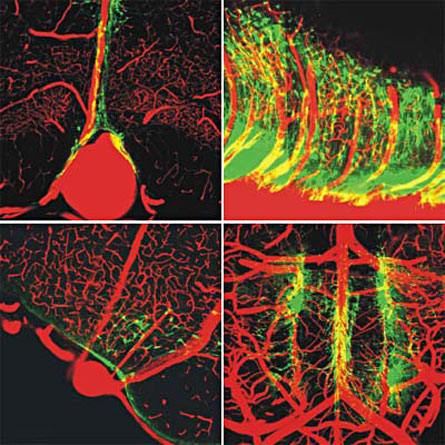SIDS and serotonin
Brain chemical implicated in sporadic changes and death in mice similar to SIDS-symptoms
- More than 2 years ago
Changing how the brain uses the chemical serotonin can cause unexpected, sporadic death—at least in mice, an Italian team reports in the July 3 Science.


The research lends credence to the idea that Sudden Infant Death Syndrome, which each year kills roughly 2,000 human infants aged 0 to 1 year, is related to a deficiency in the babies’ serotonin system.
“While it is premature to make a direct link between our study and the cause of SIDS,” says Cornelius Gross, a neuroscientist at the European Molecular Biology Laboratory in Monterotondo, Italy, who led the study, “our work should strengthen the belief that serotonin is critical to SIDS and should focus clinicians’ research on understanding the link between the two.”
The team’s study is the first to show how abnormalities in the brain’s serotonin system might cause sudden death, says Rachel Moon, an expert on SIDS at the Children’s NationalMedicalCenter in Washington, D.C. The results are “very preliminary,” but to have any model in living creatures that relates unexpected death to serotonin “is a really big deal,” says Moon, who was not involved in the new study.
The findings offer more evidence that SIDS is a developmental disorder that babies are born with and not a chance death caused by a parent doing something wrong, Marian Willinger, an expert on SIDS at the Eunice Kennedy Shriver National Institute of Child Health and Human Development in Bethesda, Md., said in a July 3 teleconference.
To show that alterations in an animal’s serotonin system can kill, seemingly without cause, Gross and his colleagues injected extra serotonin 1A receptors into the brainstems of living mice. The receptors regulate serotonin levels in the brain, inhibiting serotonin neurons when levels get too high.
The mice with extra serotonin 1A receptors showed a 20 percent decrease in serotonin levels and the same percent drop in serotonin neuron firing compared to normal mice. The altered mice also suffered, and most died, from SIDS-like symptoms—extreme drops in heart rate and body temperature—when they were juveniles. The unaltered mice did not suffer these symptoms or die unexpectedly.
Previous research has shown that completely removing serotonin from the brains of mice does not kill the animals.
“So in essence,” Gross says, “it is worse to have a screwed up serotonin system than not have one at all.”
Researchers such as Dartmouth physiologist Eugene Nattie do have one concern with the team’s results—the age of the mice. Babies who die of SIDS are most often about 2 months old, which correlates to about a 15-day-old mouse, he says. The mice in this study died most often at 30 to 60 days. Mice reach maturity at 90 to 100 days.
“There are big arguments over what ages are equivalent from a mouse to a human,” Nattie says. “These mice are a little old for what we think links with SIDS.”
Still, he says, “the exciting thing is really that the mice are dying, spontaneously.” And, he adds, the study is a step forward in creating a much needed biochemical and physical understanding of SIDS.







